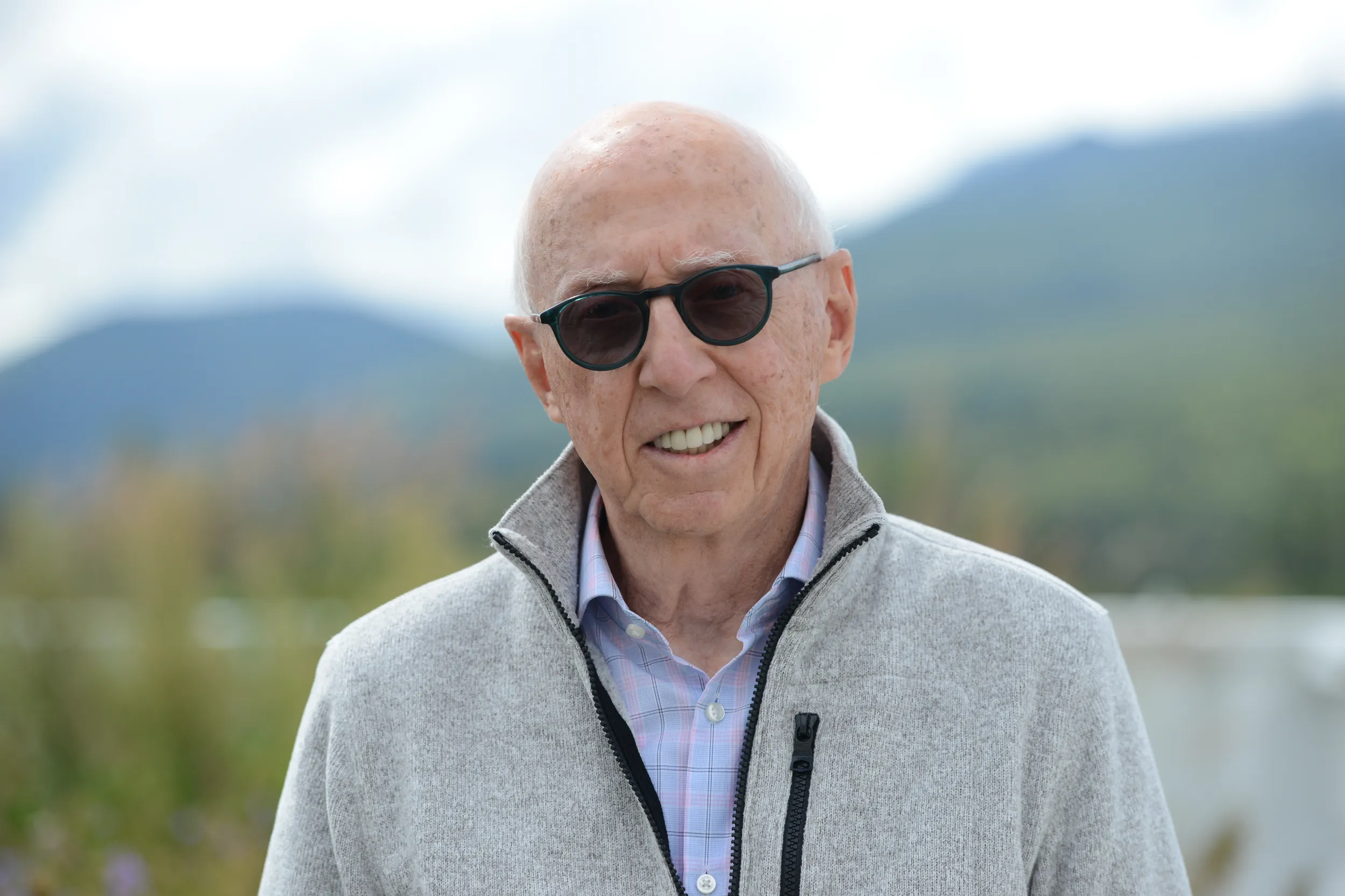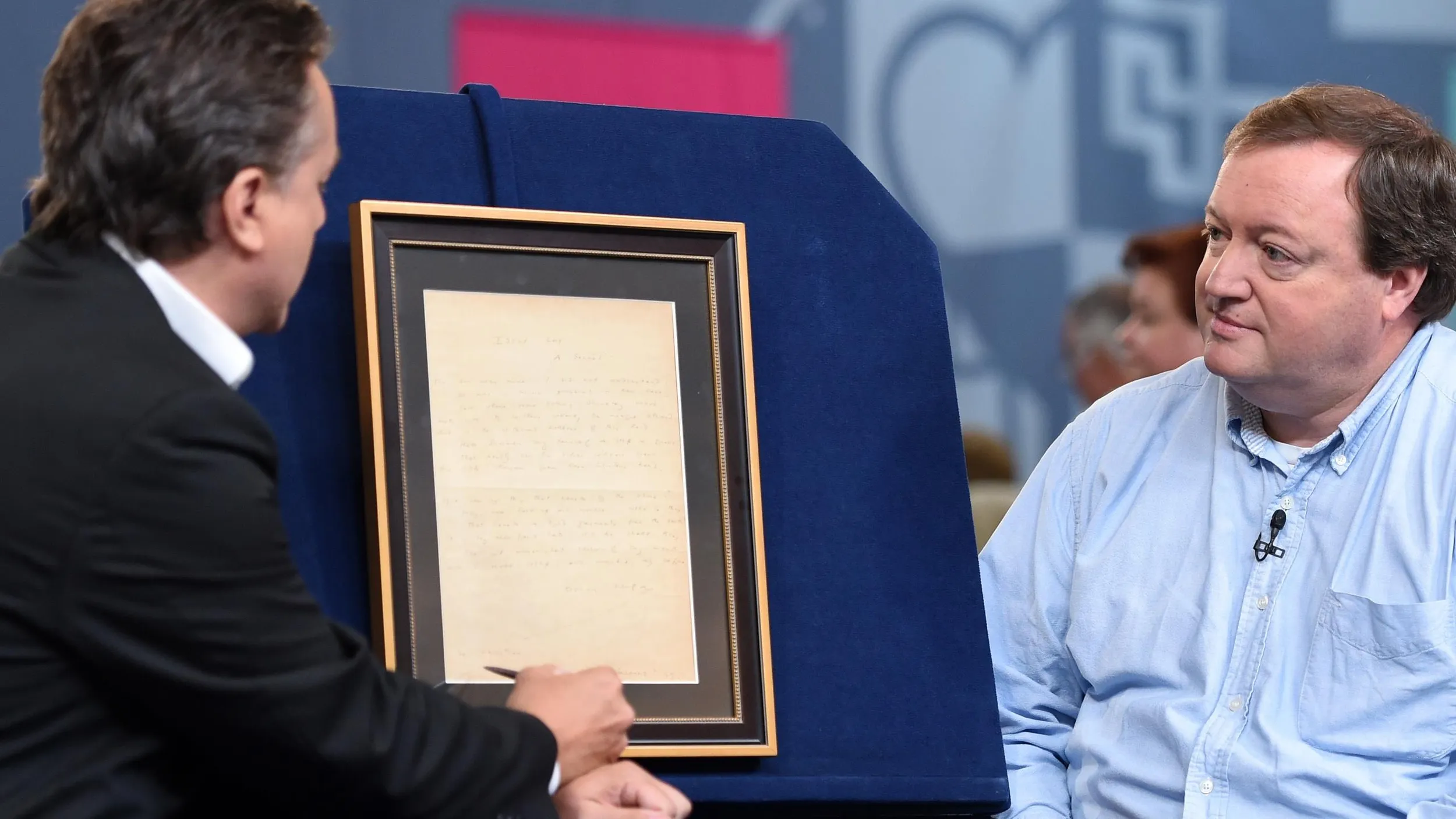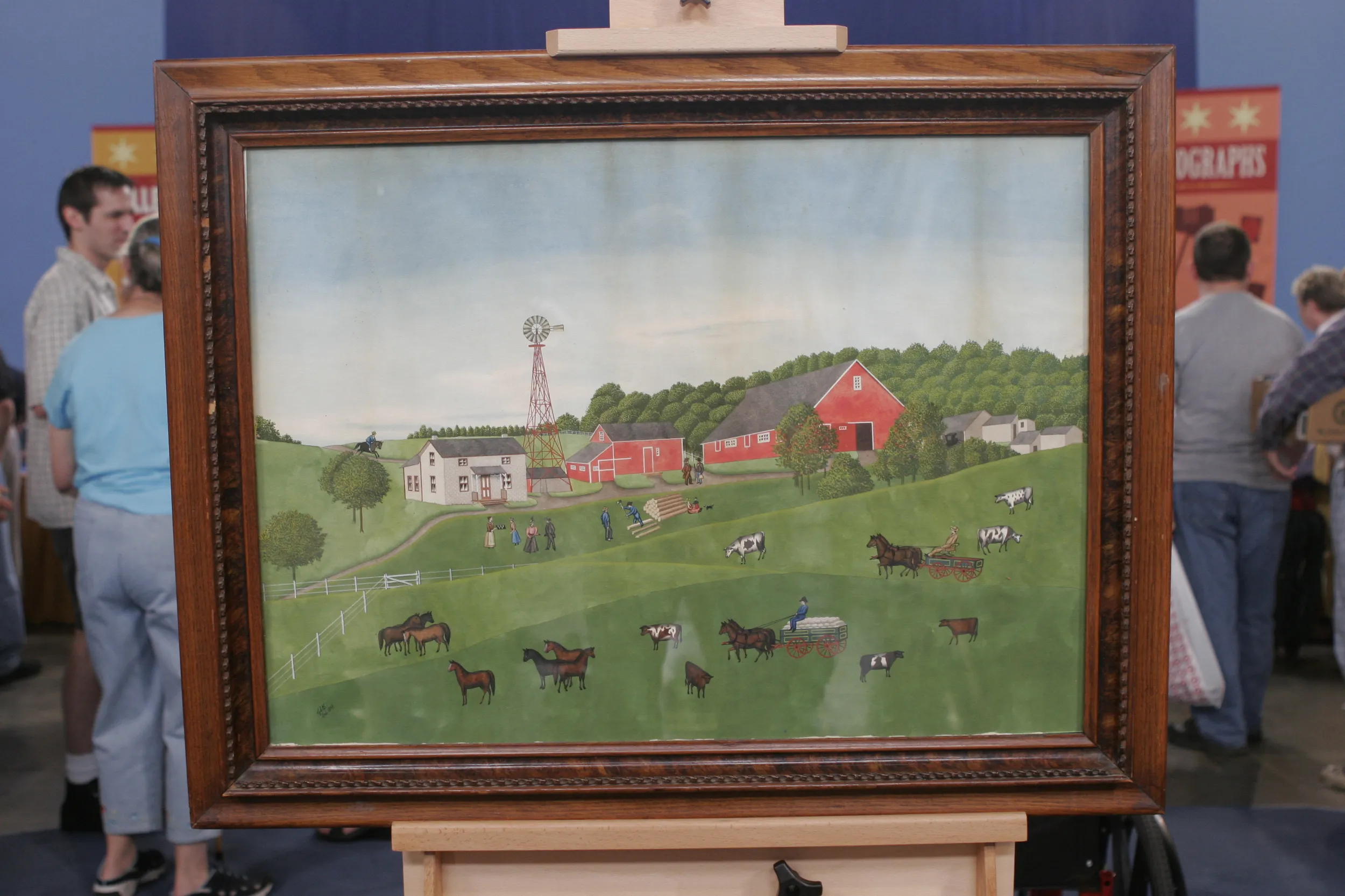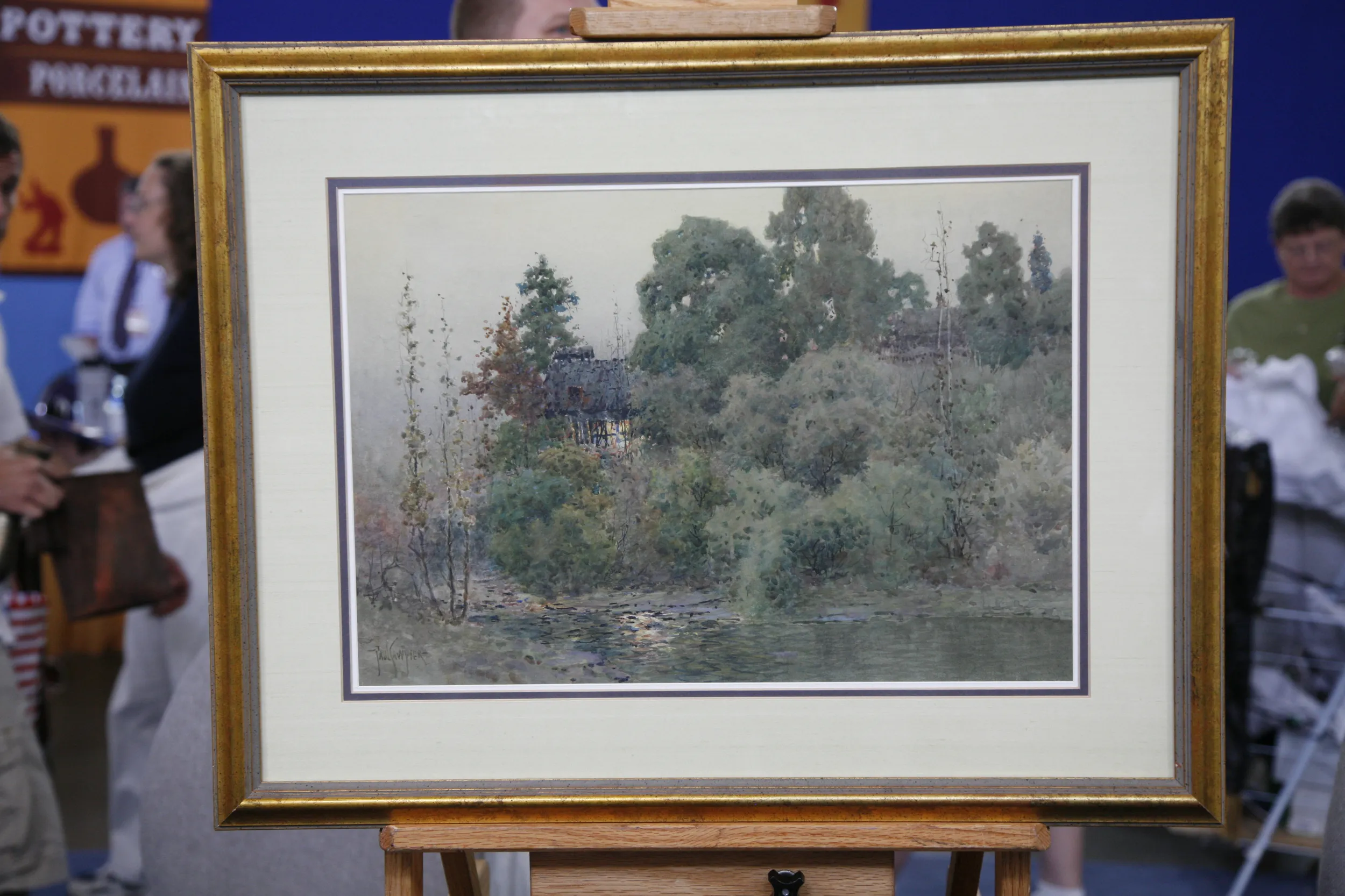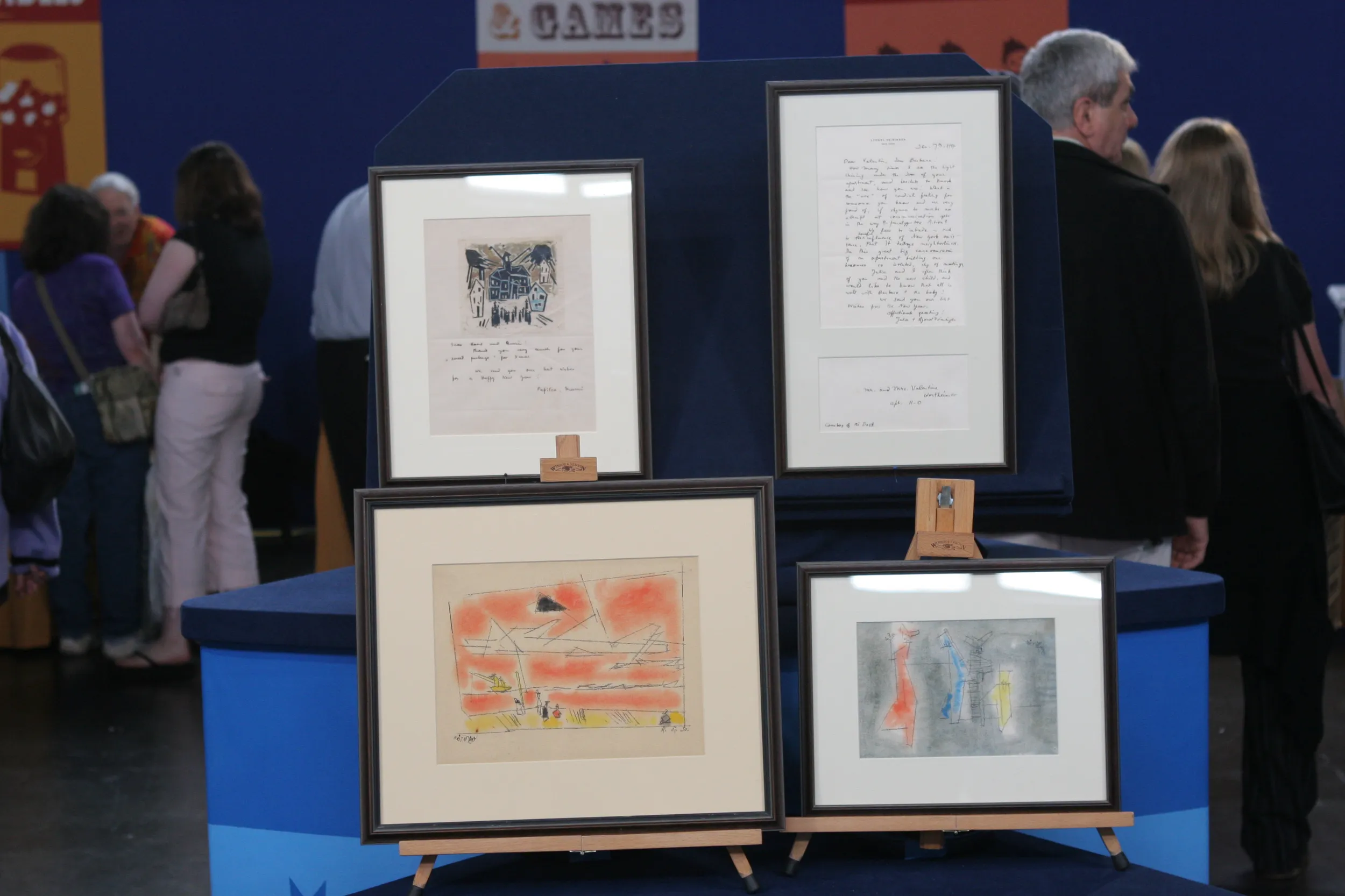GUEST: I brought a drawing that was done by I guess my father's great-great uncle when he was in the 11th Cavalry from Ohio, but he was in Fort Laramie, Wyoming, at the time when he drew this, and made a presentation to it to his first wife. My father had it when, you know, when I was little. I know it was in a box and I just never paid any much attention to it. I wish I would've gotten it out and looked at it sooner because it's really a nice depiction, I guess, of Fort Laramie. I think it's in, like, the 1860s because he was in the Civil War, and after the Civil War, he went to Fort Laramie, and then he went back to Decatur, Illinois, so...
APPRAISER: Your history's a little bit fractured, and the fact that it says, "Presented to Sarah Johnson," which was his first wife, and this is your relative. What's interesting about it, he is actually not the maker of this piece.
GUEST: He's not?
APPRAISER: He is not.
GUEST: Okay.
APPRAISER: And the actual maker of this piece is listed right here, Caspar W. Collins.
GUEST: Okay.
APPRAISER: And he served with your relative, and he was an officer, a lieutenant in the 11th O.V.C., Ohio Volunteer Company.
GUEST: Okay.
APPRAISER: So they were stationed out in Fort Laramie, and this was at a time in Wyoming where it was the Wyoming Territory. This was truly the Wild West. And Caspar Collins is actually quite well known, and he was born in Ohio, and he went out west as a very young man because his father was a colonel in the Army. And his father's job was in the western territory protecting telegraph lines and the early settlers.
GUEST: Okay.
APPRAISER: And as a young boy, Caspar Collins actually went out and lived with him. So he really was affected by the West and the romance of the West, and he started drawing. And he was responsible for drawing some of the earliest maps and depictions of the early forts and settlements in the Wyoming Territory.
GUEST: Oh, my goodness, all right.
APPRAISER: And there is actually a body of work that is known, and that's why we know, even though it's not signed by Collins, it actually is by Collins.
GUEST: Oh, okay.
APPRAISER: It's a wonderful folky scene of Fort Laramie. And if you take a look, they did a recent rebuilding of Fort Laramie, how accurate this drawing is. It's a watercolor, it's on a very fine muslin, almost like it was tent material. And he listed all the people in the unit. And he probably made this as a favor for your relative.
GUEST: Oh, cool.
APPRAISER: I think when it originally was made and given to Sarah Johnson as a present, I think it was made just to be a memento. This is very tumultuous times out there. There's a lot happening. And the soldiers at Fort Laramie were pretty tough on the local Indian population.
GUEST: Yeah...
APPRAISER: And shortly before, there was a famous battle, the Platte River Bridge Massacre. And it's where the Indian tribes actually got together and attacked the area near the fort, and at that point in time, Caspar Collins was killed. And the Indian attack was in part a reprisal for two Indian chiefs that were hung at Fort Laramie. Because it's a family piece, I think we're going to put an insurance value on it today of $20,000.
GUEST: Oh my God. Really?
